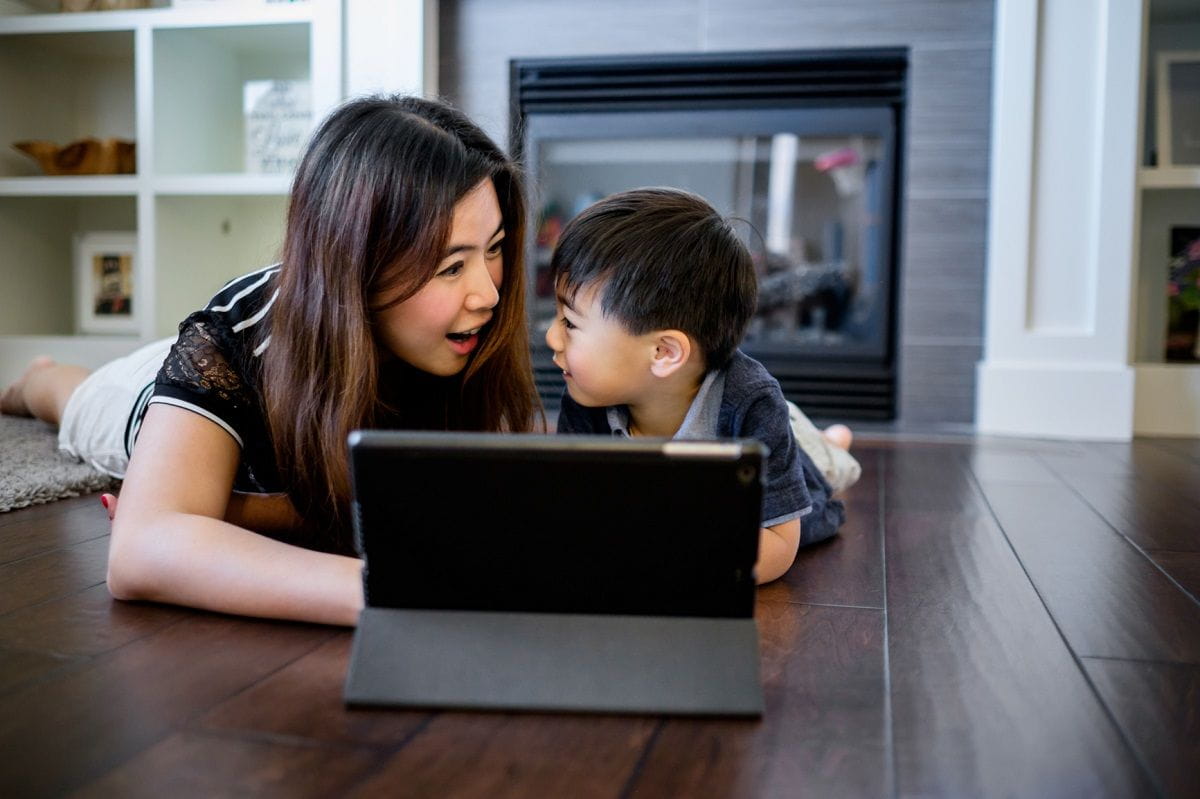Board Books or iPads, Picture Books or Kindles: How is a Page Different than a Screen?

“Mama! Read me Clifford on the iPad!” When a book can bark, does story time change? Does the way our children read—on a screen versus on a page—change how they read? Research says yes, but not for the reasons that you may think.
Electronic readers seem to change the types of conversations that parents and children have over a story. With e-readers, we adults tend to be more prescriptive when talking—push this, swipe that—and less conversational, and that changes what children are learning when we read together.
Electronic readers, iPads, and eBook libraries are a part of our lives, so what’s a busy parent to do? Here are five great ways to keep story time all about the stories—no matter how you’re reading them.
1. Skip the bells and whistles
Studies have shown that so-called “enhanced” e-books—kid books with embedded games, songs, and activities—may lead to reduced reading comprehension when compared to e-books without all the doo-dads. Whatever you’re reading together, choose good books. With electronic readers, pick books with fewer games and more focus on the story itself.
2. Make your own silly voices
Don’t let illustrations, animations, or voice recordings do all the work! Reading out loud using voices and exaggerating facial expressions to express surprise, sadness, happiness, or fear helps your child learn about feelings—in herself and in other people. This valuable skill can help her grow into a good friend.
3. Make it personal
As you read, bring the conversation into the real world by relating events in the story to things in your child’s memories or current life. When a character has a birthday party, ask what your child remembers about her last birthday. These connections can increase vocabulary and memory.
4. Snuggle up
A major benefit of story time is the physical connection of cuddling up and making contact. When you cradle and hold your child, your brains release dopamine—the pleasure hormone that signals reward and reduces stress. This cuddling “high” is important for bonding—and the more you snuggle, the more you experience dopamine’s effects, which creates a cycle that makes you want to snuggle more. How great is that?
5. Ask great questions
Try two kinds of questions to deepen your child’s engagement with a story—open-ended questions and predictive questions. Open-ended questions—“Why do you think the monkey is throwing bananas?” “How do you think that makes the bear feel?”—can’t be answered with a simple “yes” or “no” and help children express complex ideas in their own words. Predictive questions, like—“What do you think will happen next?” “Look at the cover, what do you think this book will be about?”—can spark curiosity and imagination. And isn’t that what story time is all about?





